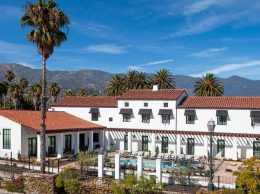Editorial: Hotel tax break puts politics ahead of policy
IN THIS ARTICLE
- Editorials Topic
- Editorial Board Author
By Editorial Board Friday, March 9th, 2012
The Santa Barbara County Board of Supervisors took a big gamble with taxpayer’s money on March 6 when it voted 4-1 to draft an ordinance that will likely give Los Angeles developer Rick Caruso an estimated $15 million tax break in exchange for a promise to turn a dilapidated site into a new Miramar resort.
The decade-long bed-tax rebate would apply to all luxury hotel developers in the unincorporated areas of the county, but it’s loaded with unintended consequences:
• It puts Santa Barbara, Goleta, Santa Maria and other city governments at a steep disadvantage in the competition to lure high-end hotels and hotel-conference center complexes.
• It creates an increased potential for political favoritism to creep into a permitting process that’s already fraught with myriad obstacles, including litigation threats.
• It distorts the commercial real estate markets by giving future developers a powerful tax incentive to build bigger projects whether the market demands it or not.
Since its closure more than a decade ago, the Miramar’s graffiti-flecked buildings have started to crumble, and county officials are eager to do something about it. While the Great Recession has stalled the project, Caruso, who bought it in 2007, has given vague promises to pay out of pocket to keep it alive. Caruso offered the county a deal. He would finance the teardown of the buildings if the board would grant yet another permit extension and pass an ordinance giving luxury hotel builders a tax rebate for up to 10 years’ worth of bed taxes, which county staffers estimate is worth about $15 million in Caruso’s case.
Adoption of the ordinance is not necessarily guaranteed. Cities are likely to argue that they are now at an unfair disadvantage in recruiting hotel projects unless they offer a similar deal to developers. Those cities would then miss out on tax revenues that support everything from repairing potholes to hiring more cops and firefighters. With two Santa Barbara-based projects — La Entrada and Fess Parker’s Waterfront Hotel — close to construction, the issue of subsidies could heat up fast.
As reported by the Business Times’ Dana Olsen on page 1A, the proposed ordinance would likely only apply to four- and five-star hotels that cost more than $50 million to build. The board would vote on whether each new project is worthy of the lucrative tax break.
Build fast and bolt
The tax break’s expected $50 million project threshold would encourage developers to build big, build fast and then bolt. They might not necessarily care if the property won’t be profitable when the bed tax rebate — you might call it a “too big to fail” subsidy — goes away.
We will grant that the ordinance would make it easier to build a high-end resort in North Santa Barbara County, which could be a game-changer for the greater Santa Maria Valley in terms of both caché and well-paying service jobs. But for now, it appears county leaders are willing to take a hit on behalf of taxpayers in the long run in order to get an eyesore moving and reap other tax revenue streams in the short run. That smacks of desperation.
At the end of the day, developers and developments will succeed or fail based on whether they can execute effectively, find the right pricing strategy and market the property effectively.
Creating a tilted playing field for projects based on their size and the developers’ political acumen will make for bad business decisions and bad public policy.











